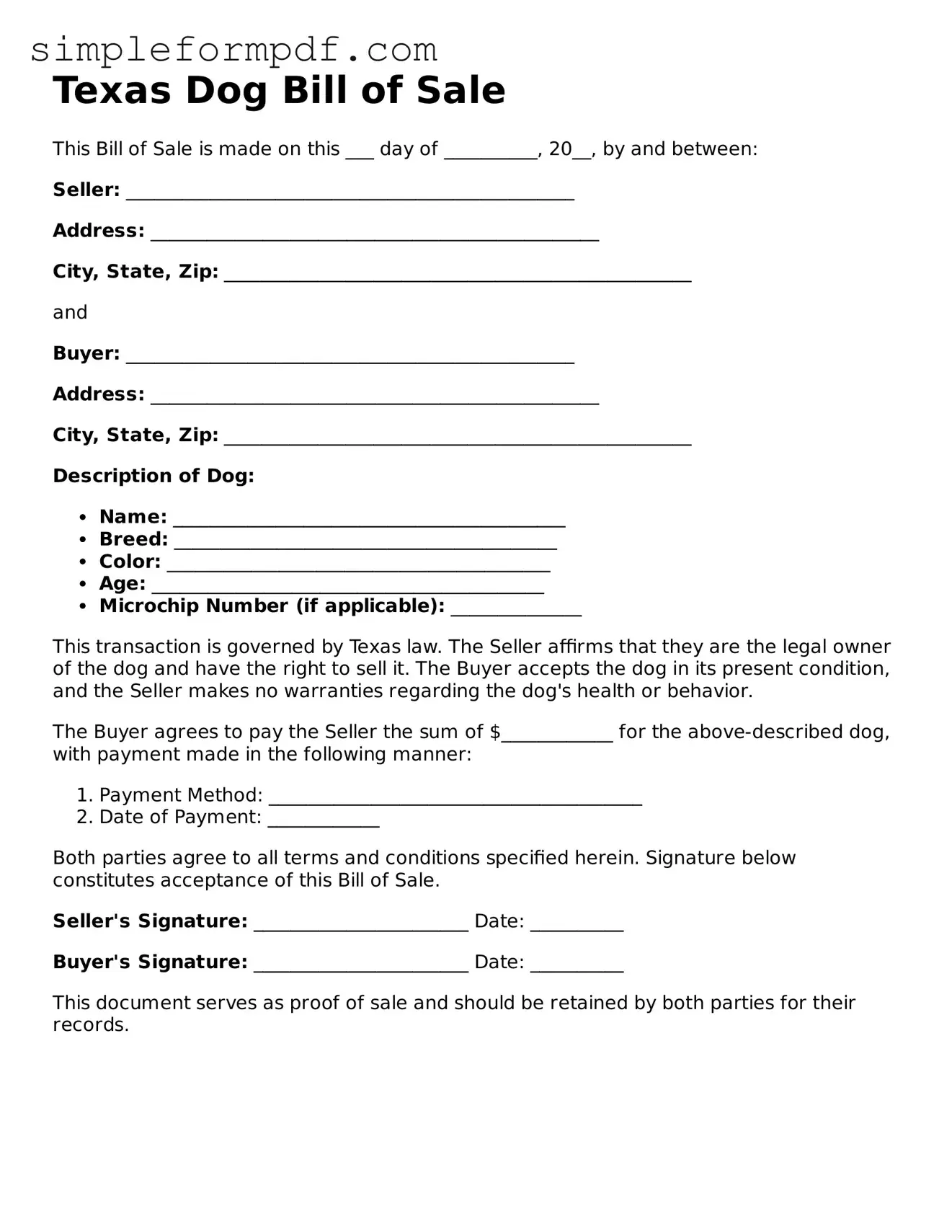Texas Dog Bill of Sale
This Bill of Sale is made on this ___ day of __________, 20__, by and between:
Seller: ________________________________________________
Address: ________________________________________________
City, State, Zip: __________________________________________________
and
Buyer: ________________________________________________
Address: ________________________________________________
City, State, Zip: __________________________________________________
Description of Dog:
- Name: __________________________________________
- Breed: _________________________________________
- Color: _________________________________________
- Age: __________________________________________
- Microchip Number (if applicable): ______________
This transaction is governed by Texas law. The Seller affirms that they are the legal owner of the dog and have the right to sell it. The Buyer accepts the dog in its present condition, and the Seller makes no warranties regarding the dog's health or behavior.
The Buyer agrees to pay the Seller the sum of $____________ for the above-described dog, with payment made in the following manner:
- Payment Method: ________________________________________
- Date of Payment: ____________
Both parties agree to all terms and conditions specified herein. Signature below constitutes acceptance of this Bill of Sale.
Seller's Signature: _______________________ Date: __________
Buyer's Signature: _______________________ Date: __________
This document serves as proof of sale and should be retained by both parties for their records.
